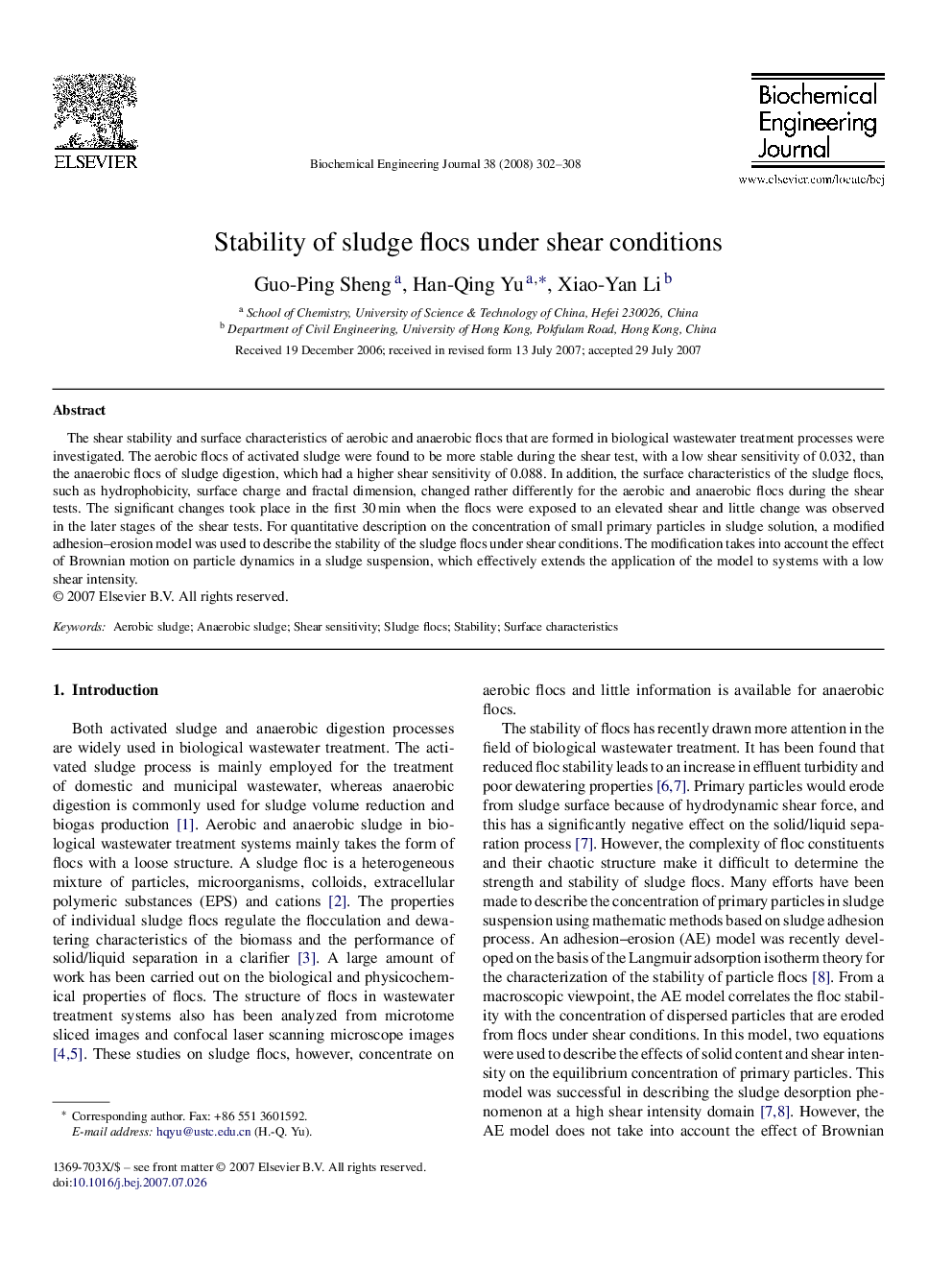| Article ID | Journal | Published Year | Pages | File Type |
|---|---|---|---|---|
| 4648 | Biochemical Engineering Journal | 2008 | 7 Pages |
The shear stability and surface characteristics of aerobic and anaerobic flocs that are formed in biological wastewater treatment processes were investigated. The aerobic flocs of activated sludge were found to be more stable during the shear test, with a low shear sensitivity of 0.032, than the anaerobic flocs of sludge digestion, which had a higher shear sensitivity of 0.088. In addition, the surface characteristics of the sludge flocs, such as hydrophobicity, surface charge and fractal dimension, changed rather differently for the aerobic and anaerobic flocs during the shear tests. The significant changes took place in the first 30 min when the flocs were exposed to an elevated shear and little change was observed in the later stages of the shear tests. For quantitative description on the concentration of small primary particles in sludge solution, a modified adhesion–erosion model was used to describe the stability of the sludge flocs under shear conditions. The modification takes into account the effect of Brownian motion on particle dynamics in a sludge suspension, which effectively extends the application of the model to systems with a low shear intensity.
